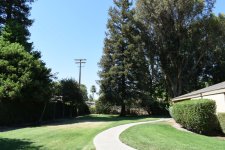Hi, everyone.
Thank you all for helping me with my experiment. I see that so many respondents here are experts if not specialists in landscape photography. So decide it's a good place to ask a very basic skill-wise question in landscape-related practice: For A mode, AF-S, and single-point focus area, large f number, shooting a long, deep scenic photo with more than 2-3rd of frame space filled with sky above the horizon. In order to cover the background to infinity and keep as much as possible of the foreground in focus, hyperfocal point can be used. In a normal situation like this, the hyperfocal point likely will be located at near bottom of the foreground (hyperfocal distance ~ 1.5 to 3m for my camera setting). Using viewfinder to focus in this situation will require first select a focus point (from within viewfinder) not in the center, but below and on the side. I feel this move bit awkward as your right thumb press on bfb and your left hand cross over to press multi-selector buttons, meanwhile your face is on the viewfinder. How hard is it to get done! Now if you choose the center point, it will point up in the sky and most of time it would find no object to focus and won't fire. If using liv view to focus, it's easier to move the focus square to the spot of your pick, but then there is no in-focus confirmation to check (like in viewfinder). So simple version of the question: how do you practically focus your landscape photos with hyperfocal distance?

